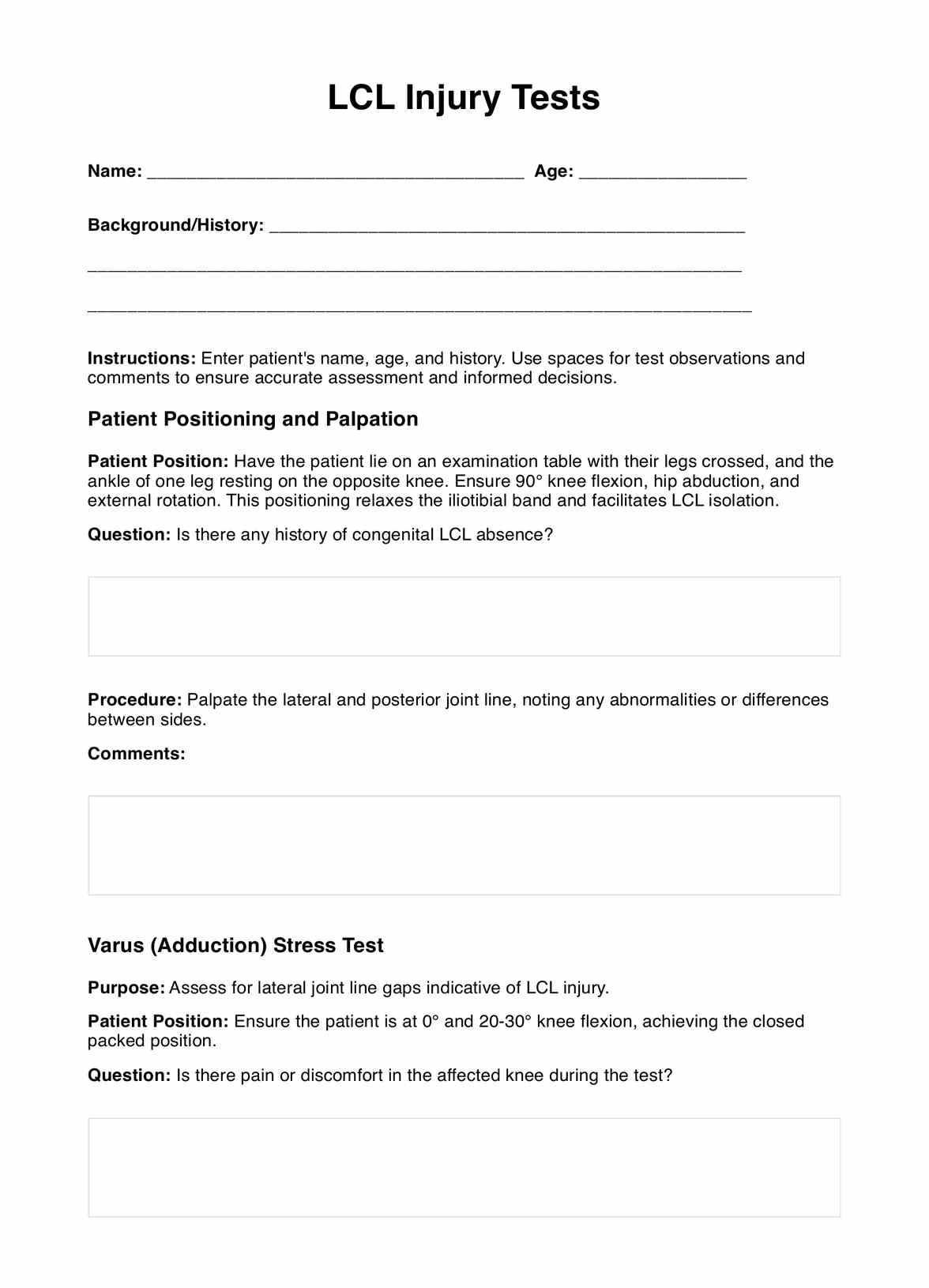Healthcare professionals such as orthopedic specialists, sports medicine practitioners, physical therapists, and emergency medical personnel typically use LCL Injury Tests. These experts have the expertise to assess potential injuries to the lateral collateral ligament (LCL) and other knee ligaments.

LCL Injury Tests
Assess LCL injury severity accurately with the LCL Injury Test. Discover its reliability, accuracy, and role in diagnosing potential ligament tears.
LCL Injury Tests Template
Commonly asked questions
LCL Injury Tests are used when a patient presents with knee discomfort, mobility issues, or a history of trauma. They are employed to evaluate suspected LCL injuries, especially in scenarios involving sports-related incidents, accidents, or other instances where knee ligament damage is a concern.
Healthcare professionals follow a structured approach outlined in LCL Injury Tests templates or apps. They position the patient as instructed, conduct specific tests like the varus (adduction) stress test, document observations, and assess discomfort or pain. The results are then interpreted to determine the severity of LCL injury and potential ligament involvement. This information guides treatment decisions, helps monitor progress, and ensures optimal patient care.
EHR and practice management software
Get started for free
*No credit card required
Free
$0/usd
Unlimited clients
Telehealth
1GB of storage
Client portal text
Automated billing and online payments











